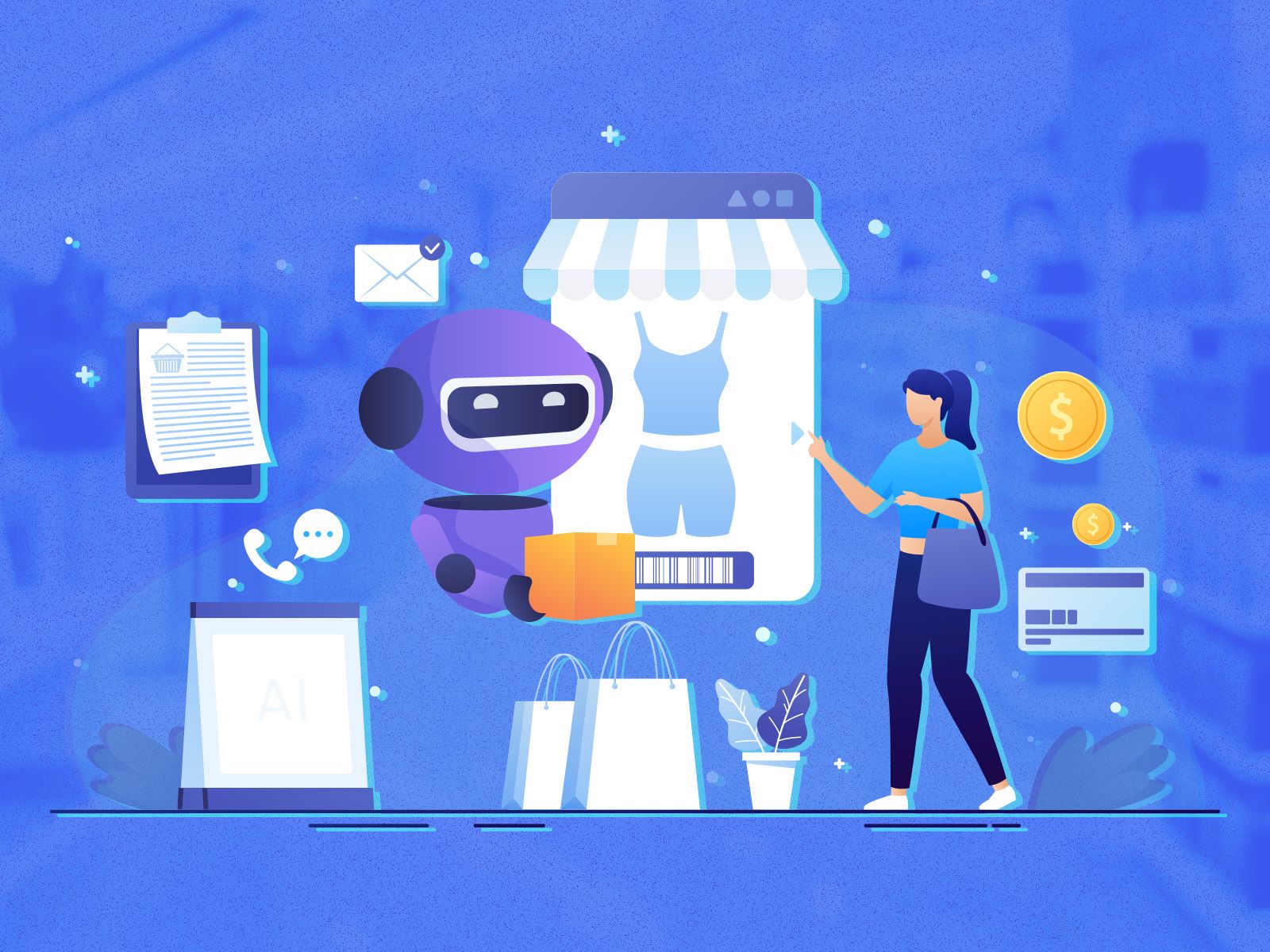Breaking Down the Building Blocks of Conversational AI

Illustration: © AI For All
The holiday shopping season is upon us, and while your retail organization’s HR team remains laser-focused on scaling your workforce, you’re assessing how you can make meaningful adjustments to your tech stack to ensure you provide customers with an incredible online shopping journey. One disruptive technology that should top your wish list? Conversational AI – a solution that is able to process, make sense of, and respond remarkably well to human language in a natural conversational manner - is transforming the way we work, shop, and more.
Conversational AI will be a true lifesaver when your customers are nearly done with their holiday shopping but still can’t find the perfect gift for their loved one who has everything. Instead of leaving these customer to their own devices, adopt AI that does the thinking for them by ensuring your website is equipped with advanced chatbots that allow customers to describe what they’re looking for, like “cozy gift for my fabulous mother” and, like a human sales associate, gather some options for them to pick from. This AI-based chatbot will remain helpful through this customer’s journey, checking in as they continue to browse for the perfect product with questions like, “Still looking for a gift? We have a few options that might interest you.”
This is just one example of conversational artificial intelligence (AI) in action. What makes it so powerful? Though often regarded as one entity, technologists forge conversational AI by converging several cutting-edge technologies: machine learning, speech recognition, natural language processing, understanding and generation, dialogue management, and response delivery.
The Fundamentals of Conversational AI
Machine Learning
Machine learning is a foundational element of conversational AI. Conversational interfaces use tools such as natural language understanding to refine their understanding of language, adapt to user preferences, and enhance their response-generation capabilities - ensuring accuracy and efficiency during the interaction.
Speech Recognition
Additionally, human speech recognition technology, which converts spoken language to text, allowing the system to process and comprehend the input, is extremely important. Speech recognition employs sophisticated algorithms that analyze audio signals and convert them into meaningful words and sentences, enabling conversational AI systems to accurately transcribe spoken language and provide intelligent responses.
Natural Language Processing, Understanding, and Generation
Natural language processing (NLP), understanding (NLU), and generation (NLG) are also key elements when developing conversational AI tools. NLP is about converting text into structured data by using algorithms - identifying keywords, parts of speech, and other important components in text, making content that’s more computer-friendly.
NLU goes a step further by leveraging AI to identify language attributes - like sentiment, semantics, context, and intent. This allows computers to understand what is meant, even if there are misspellings, errors, or language subtleties and variations.
Based on the understanding collected through NLU, conversational AI systems employ NLG techniques to produce responses that are coherent and contextually appropriate. This is done by analyzing the extracted information, combining it with predefined models and templates, and generating human-like responses.
Dialogue Management
Dialogue management you can think of as a moderator that maintains the conversational flow, keeping track of the context - but you can't see it. This technology is responsible for managing the customer conversation history and ensuring coherence in the conversation, as well.
Response Delivery
The final step of a conversational AI system is response delivery - completing the interaction by delivering the generated responses to the user. Depending on the platform and user preferences, these responses are conveyed in either text or speech. Text-based responses are commonly used with chatbots and messaging applications, while speech-based responses are typically given with virtual assistants and voice-enabled devices (think Siri on your iPhone).
Conversational AI’s Impact on E-commerce and Beyond
Conversational AI applications are transforming every industry with personalized and efficient user experience, regardless of the context. In the healthcare industry, for example, virtual assistants are being used to schedule appointments, provide medication reminders, and even answer health-related questions. Patients are able to interact with this technology, resulting in time savings and reduced frustration - as well as lightening the workloads of office staff.
For the e-commerce industry, sites leverage this technology to optimize the customer journey, providing online personal assistants to help shoppers get through the purchasing stage. Being able to talk to an online assistant is becoming the norm and proving to be widely embraced, with conversational experiences becoming increasingly mainstream. By 2025, this emerging market is expected to top nearly $14 billion. Organizations that take full advantage of conversational AI will no doubt reap the benefits, so the time to start is now.
Retail
Machine Learning
Natural Language Processing (NLP)
Author
Altair is a global leader in computational intelligence, which provides software and cloud solutions in the areas of simulation, high-performance computing (HPC), and AI. Altair enables organizations in nearly every industry to compete more effectively in a connected world while creating a more sustainable future.
Author
Altair is a global leader in computational intelligence, which provides software and cloud solutions in the areas of simulation, high-performance computing (HPC), and AI. Altair enables organizations in nearly every industry to compete more effectively in a connected world while creating a more sustainable future.









